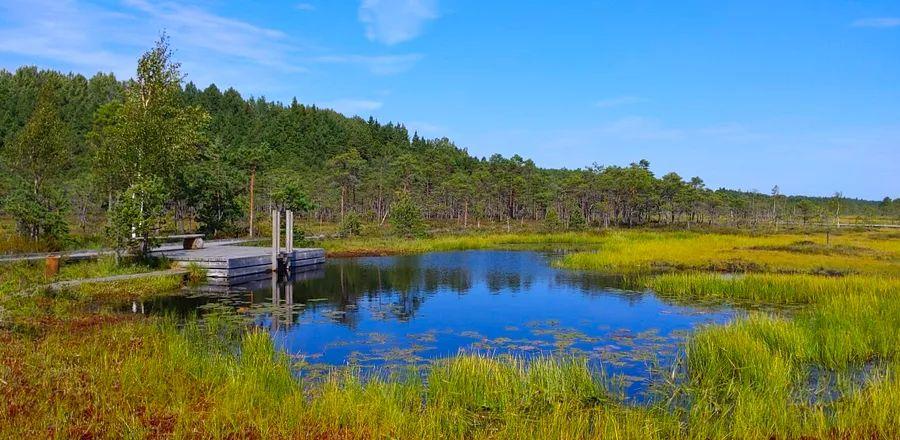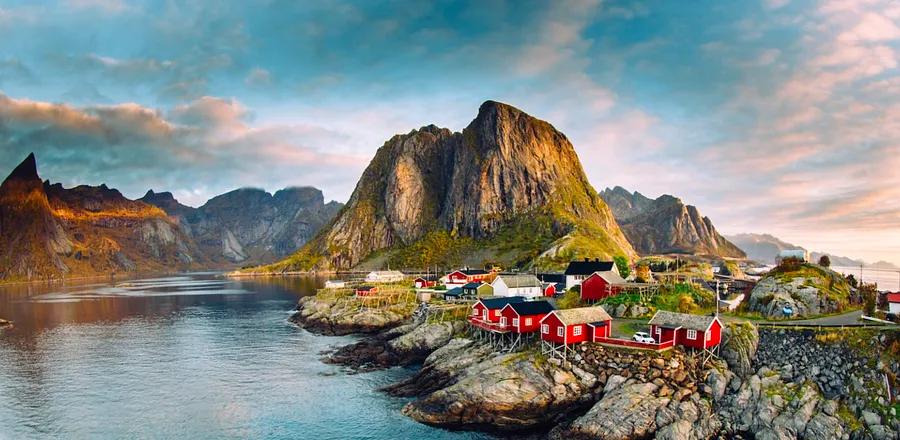Bog Hiking: The Hidden Gem of Outdoor Adventures

With caution, I stepped off the slender wooden walkway and placed my foot on what seemed like a patch of rusty grass. Suddenly, my foot sank—just an inch or so—enough for the chilly, red-tinged water beneath to seep through, reminding me that my mission here was to walk on water.
I found myself in Estonia’s Soomaa National Park, located in the central-western part of the country, famous for its lush forests, grasslands, and, most prominently, its raised bogs—a unique wetland where a soft layer of peat floats above a body of water. These areas teem with diverse vegetation and serve as vital carbon sinks. Estonia boasts one of the largest peat bog systems in Europe, and hiking here is an experience like no other. Or, more accurately, hiking on it.

Photo by Billie Cohen
My guide, Aivar Ruukel, a local who grew up in this area, opened a bed-and-breakfast along the Navesti River in 1992—just a year after Estonia gained independence from the Soviet Union. Soomaa National Park was designated in 1993, and by 1994, Ruukel had become the first person to lead canoe trips here. He soon expanded his offerings to include bog hiking tours, which are best enjoyed in the summer and early fall, although he also conducts hikes on the frozen bog during Estonia’s cold winters.
On this day, Ruukel skillfully paddled us across a narrow section of the river in a traditional wooden dugout canoe that was recognized on UNESCO’s List of Intangible Cultural Heritage in 2021. Known as haabjas, these canoes are crafted from a single tree and have been vital to the region for centuries. This is especially true due to the four rivers that meander through the area, which can rise significantly in the spring, submerging roads, forests, houses, and meadows. During this time, residents rely on canoes for transportation, a phenomenon they refer to as Estonia’s “fifth season,” typically occurring in late March or early April when snowmelt causes extreme flooding. Earlier, we had driven past a wooden post along a country lane that marked the highest water levels recorded in recent memory: the 2010 flood line reached the height of our car.
In this region lies one of Estonia’s stunning peat bogs, the Riisa bog. These wetlands account for approximately 6 to 7 percent of the country’s land area. Scientists can confirm that the Estonian bogs are over 5,000 years old due to the thickness of the peat layer that forms on top: it grows about 1 mm each year, resulting in an average thickness of five to seven meters today. Picture a soft, plush carpet floating on a pond, and you’ll begin to understand both the appearance and the sensation of walking on the bog.

Photo by Billie Cohen
After Ruukel paddled our small group across the river, we navigated through a narrow strip of trees to reach the boardwalk. Along the way, he gathered wild blueberries and bog bilberries from the underbrush, and I couldn’t help but pucker up when I tasted them. I made a mental note to look for riper ones in desserts and jams during my trip.
As we strolled for a few minutes, we finally emerged into the sunlight, and I was blown away by the view: an expansive landscape painted in shades of yellow, red, and green, reminiscent of a Van Gogh masterpiece. Green trees framed the horizon, and closer in, I spotted a few ponds that had broken through the peat and grass. One of them even featured a wooden swimming platform, where locals often take a dip in the chilly waters, Ruukel informed me.
Ruukel mentioned that while some people prefer to stay on the boardwalk during his guided hikes, those feeling adventurous can wear the special shoes he designed for walking directly on the bog. I was ready for that—this was precisely why I had come to Soomaa National Park.
The experience of bog hiking
After a brief walk on the boardwalk, I removed my sandals and slipped my bare feet into the unique bog shoes Ruukel provided. They resembled plastic snowshoes, featuring an oval frame and rubber straps. Ruukel explained that their broad design would help distribute my weight, preventing me from sinking more than an inch into the peat. Standing up, I quickly realized how comically awkward they felt.
I felt like a toddler learning to walk in those shoes—taking exaggerated steps to avoid tripping and unable to suppress a giggle every time I watched my foot sink into the mossy surface. The experience was surreal: the buoyant peat below felt solid and supportive yet just unstable and springy enough to remind me that I was far from solid ground. The closest comparison I could muster was whimsical: like walking on a wet, squishy cloud—sensorially disorienting in the most delightful way.

Photo by Billie Cohen
Eventually, I got the hang of it and waddled over to the swimming area, where the peat opened up to reveal a pool of deep, umber water. Though the depths appeared dark and mysterious, Ruukel reassured me it was safe for swimming, having done so for decades. The natural acidity of the bog water keeps bacteria at bay—plus, it’s rich in organic compounds that supposedly soften the skin. So, in I went! On that warm late-August day, the water felt wonderfully refreshing. Ruukel and I floated around for a while, discussing the bog, the park, and his life in Estonia. Afterwards, we lounged on the platform to dry off in the summer sun before heading back to the canoe and his lodge across the river for drinks and snacks.
The hikes typically last two to three hours and may include lunch; some guests opt to stay overnight at Ruukel’s cozy B&B or another nearby guesthouse. However, Estonia’s stunning capital, Tallinn, and its second-largest city (one of Europe’s 2024 Capitals of Culture and featured in the Dinogo Where to Go list) are just an hour and 45 minutes away by car, making it easy to turn this into a day trip. Fun fact: Ruukel is also an experienced mushroom forager, and he and his sister use varieties from the park’s forest to prepare delicious dishes like mushroom quiche and mushroom salad for lunch, along with a scrumptious cake made from some of the berries I had tasted in the wild.
His company, Soomaa.com, provides canoe excursions, snowshoeing adventures, and mushroom-foraging experiences. However, for me, nothing compares to the delightful oddity of bog hiking.

Photo by Billie Cohen
How to Experience Bog Hiking
• How to book: To schedule a bog hike, visit during the fifth season, or learn the art of carving a traditional dugout canoe, reach out to Aivar Ruukel via his company Soomaa.com. They offer a range of tours and information about the region. The Riisa bog boardwalk is accessible to the public, meaning visitors can explore it without a guide (it’s also wheelchair and stroller friendly). However, if you wish to venture off the boardwalk and hike directly on the bog, it’s advisable to go with an experienced guide.
• Where to stay: In Tallinn, consider the Hotel Telegraaf, Autograph Collection, a stylish renovation of the city’s historic telegraph office. In Tartu, Hotel Lydia is ideally located just a block from the main square, making it within walking distance of most attractions.
• What to bring: Just the basics for hiking—hat, sunglasses, water, and sunscreen. Also pack watersafe shoes or sandals and a swimsuit if you plan to swim. Ruukel or one of his guides will supply bog shoes, which can be worn over your regular shoes or barefoot.

1

2

3

4

5
Evaluation :
5/5